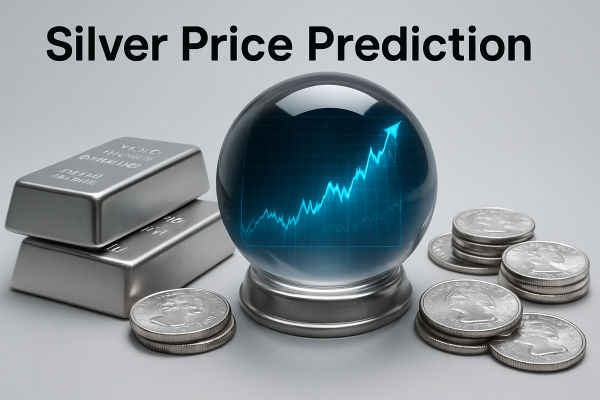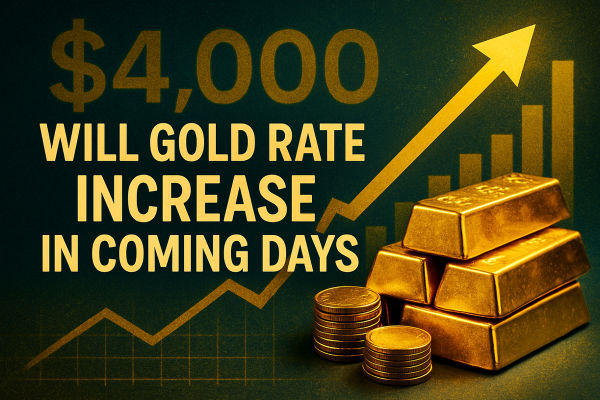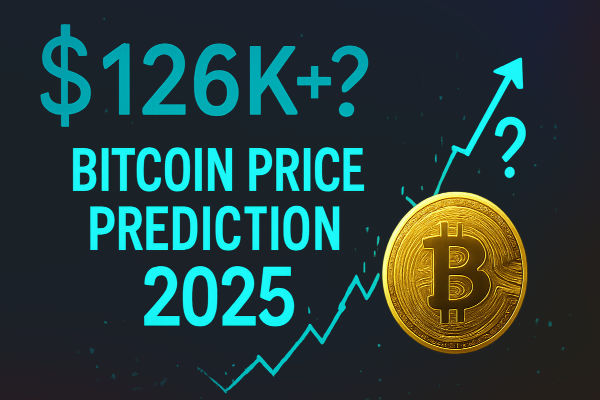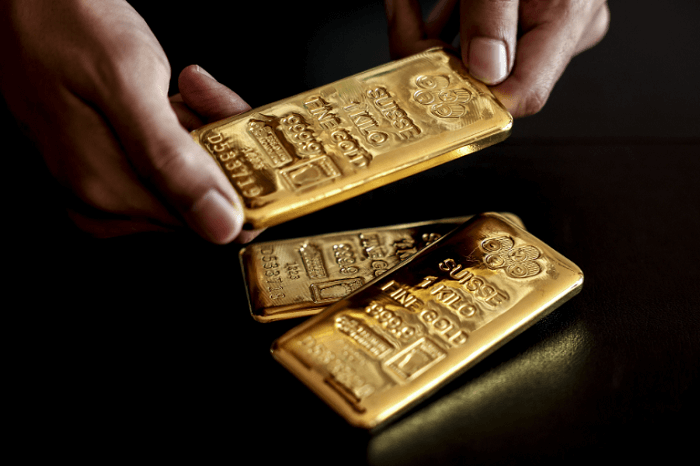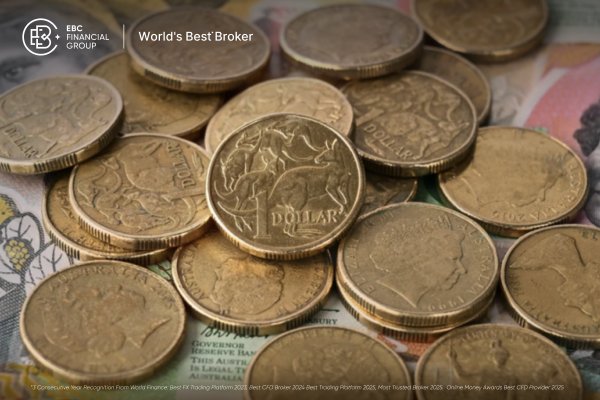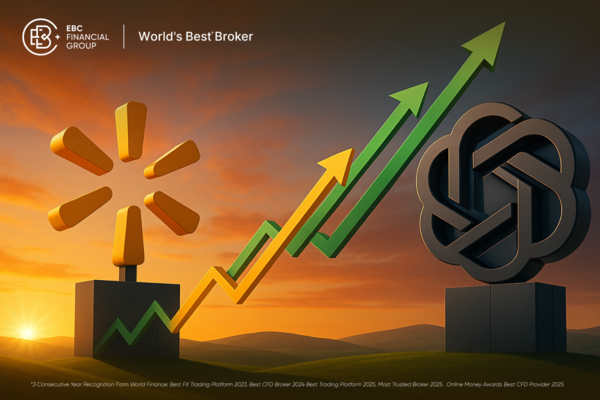In mid-July 2025, the U.S. dollar weakened sharply—slipping around 0.2% this week—triggering a surge in gold prices above $3,360 per ounce on July 15, 2025. With the dollar's slide making gold more attractive, investors wonder: Will the gold price increase again?
Understanding the interplay between currency dynamics, central bank actions, and geopolitical turbulence is key to forecasting gold's next move.
Understanding the Inverse Relationship Between Gold and the Dollar
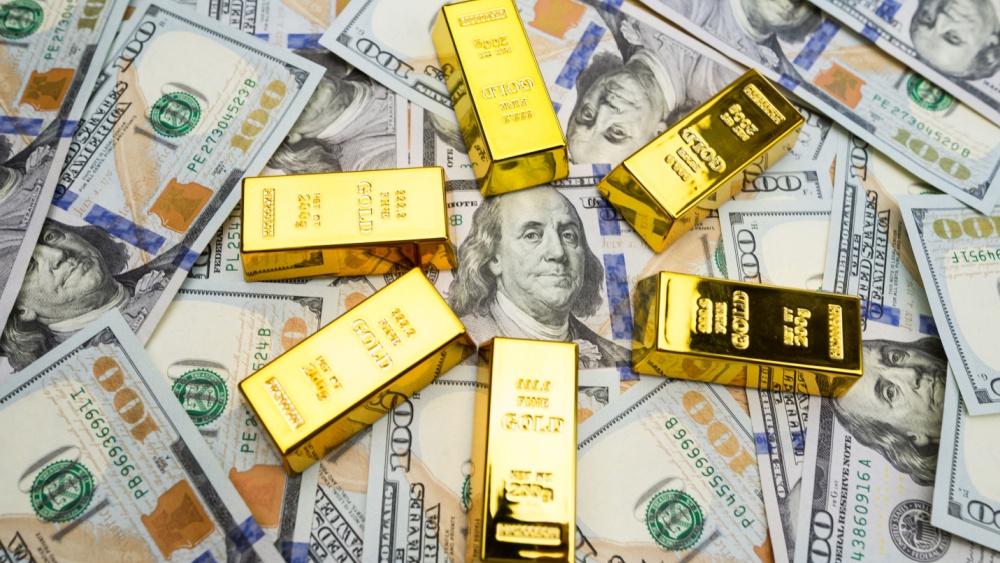
Gold and the U.S. dollar share a well-documented inverse relationship. When the value of the dollar declines, the price of gold often rises. It happens because gold is priced in dollars globally, and a weaker dollar makes gold cheaper for investors using other currencies, thereby increasing demand.
Historically, when the U.S. Federal Reserve pursues loose monetary policy—lowering interest rates or engaging in quantitative easing—the dollar tends to weaken. At the same time, inflation expectations rise, driving more investors toward gold. Conversely, a strong dollar tends to suppress gold prices as investors chase higher-yielding assets.
Recent Dollar Weakness and Gold Surge
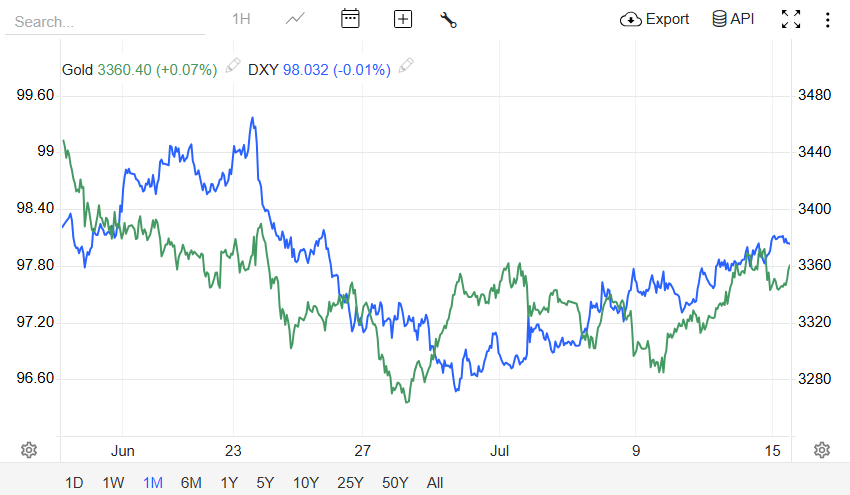
As mentioned above, the DXY dollar index has eased by around 0.2%, as of early July, supporting gold's latest rebound. With markets now pricing in rate cuts later this year, gold benefits as yields lose their cushioning effect.
Key Data & Themes Behind Recent Moves
Safe-haven flows: Trade tensions—like proposed 30% tariffs on EU and Mexico goods—have stoked risk-off sentiment, boosting gold to fresh three-week highs near $3,354–3,360.
Central bank buying: Q1 2025 saw record purchases of 244 tonnes—the strongest quarterly pace ever—with 43% of central banks planning further accumulation, supporting gold in the $3,200–3,500 band.
Technical signals: After gaining 27% YTD, gold shows bullish momentum. RSI is neutral to positive (53.9), moving averages hold, and MACD suggests an upward tilt.
Will Gold Price Increase Continually?
Short-Term Outlook
1) Resistance & Support Levels
Gold recently broke above the $3,332–3,346 zone, indicating momentum toward $3,370–3,400. Key psychological resistance stands at $3,400–3,435, while support zones lie between $3,300–3,332.
2) Fed Policy & Dollar Rebound
August/September inflation and payroll data will heavily influence the Fed. If strong data delays rate cuts, the dollar may bounce back, capping gold gains. Markets still expect a 50-basis-point cut by year-end, but a stronger greenback could restrict further upside.
Medium-Term Themes
Global uncertainties—geopolitical tensions, trade policy, and inflation—continue to support gold, but momentum may fade if the dollar strengthens or risks subside.
The World Gold Council and economists anticipate mid-term price softening if global risks ease, supported by a stronger dollar or declining central bank demand.
Long-Term Projections
Analysts predict gold reaching $3,600–3,839 by year-end and trending toward $4,000+ in 2026.
Conservative base-case scenarios see gold settling between $3,100 and $3,500, while bull cases driven by stagflation or de-dollarisation could push gold above $4,000 within six to nine months.
Historical Examples: Gold Rallies Amid Dollar Weakness
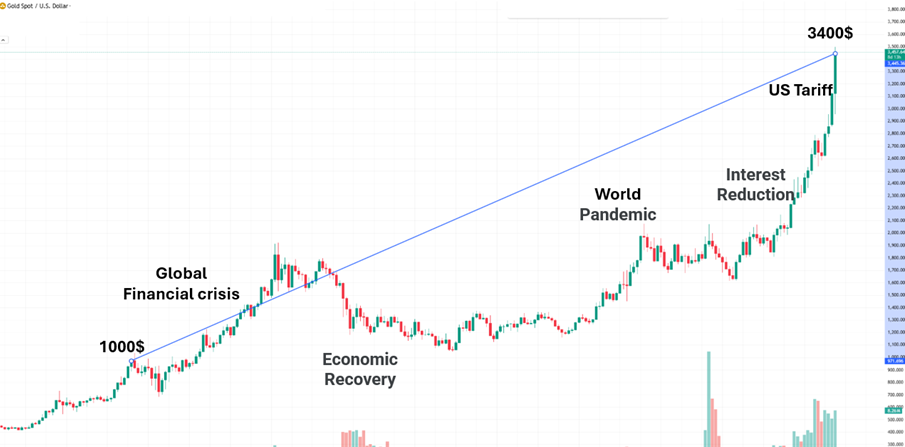
Understanding how gold behaved during past dollar plunges helps provide context. Let's revisit a few instances:
2008–2011 Financial Crisis
As the Federal Reserve slashed interest rates and engaged in quantitative easing, the dollar weakened significantly. Gold rose from around $700 to over $1,900 per ounce by 2011.
2020 Pandemic Response
In response to COVID-19, massive monetary stimulus caused the dollar to decline. Gold rallied to a then-record high of over $2,070 in August 2020.
Early 2023 Rally
As inflation soared and the dollar dropped due to expectations of dovish policy, gold once again rose above $2,000. Each of these episodes featured a common theme: uncertainty, inflation, and weakening dollar sentiment—all of which are relevant in 2025.
Investor Strategies & Timing
For those considering gold now, buying near $3,330–3,350 may offer a balanced entry amid volatility. Traders could aim to trim or hedge around resistance levels.
Long-term holders benefit from gold's hedge characteristics but should avoid over-allocating at recent highs—5–10% of a diversified portfolio remains a commonly recommended range.
However, investors should watch for these headwinds:
A Fed pivot, driven by robust inflation or jobs data, may strengthen the dollar. If the U.S. and China/EU resolve trade disputes or calm geopolitical tensions, gold's safe-haven appeal may fade. Additionally, "gold fatigue" could lure investors to other assets like platinum and silver.
To stay ahead:
Track the U.S. dollar index (DXY), which inversely correlates with gold; monitor Fed communications and inflation reports; assess central bank buying trends globally; and watch geopolitical developments, including tariff headlines. These factors collectively help predict whether gold surges or consolidates.
Conclusion
In conclusion, gold's rally amid dollar weakness shows the metal's enduring role as a hedge. In the near term, surges above resistance may lead to $3,370–3,400, though a stronger dollar and risk-on environment could suppress gains.
Over the medium to long term, structural forces such as central bank buying, inflation hedging, and geopolitical risks support a trajectory toward $3,600+ by year-end and beyond. Investors should stay agile, balancing tactical entries around dips with long-term allocation discipline.
Disclaimer: This material is for general information purposes only and is not intended as (and should not be considered to be) financial, investment or other advice on which reliance should be placed. No opinion given in the material constitutes a recommendation by EBC or the author that any particular investment, security, transaction or investment strategy is suitable for any specific person.









